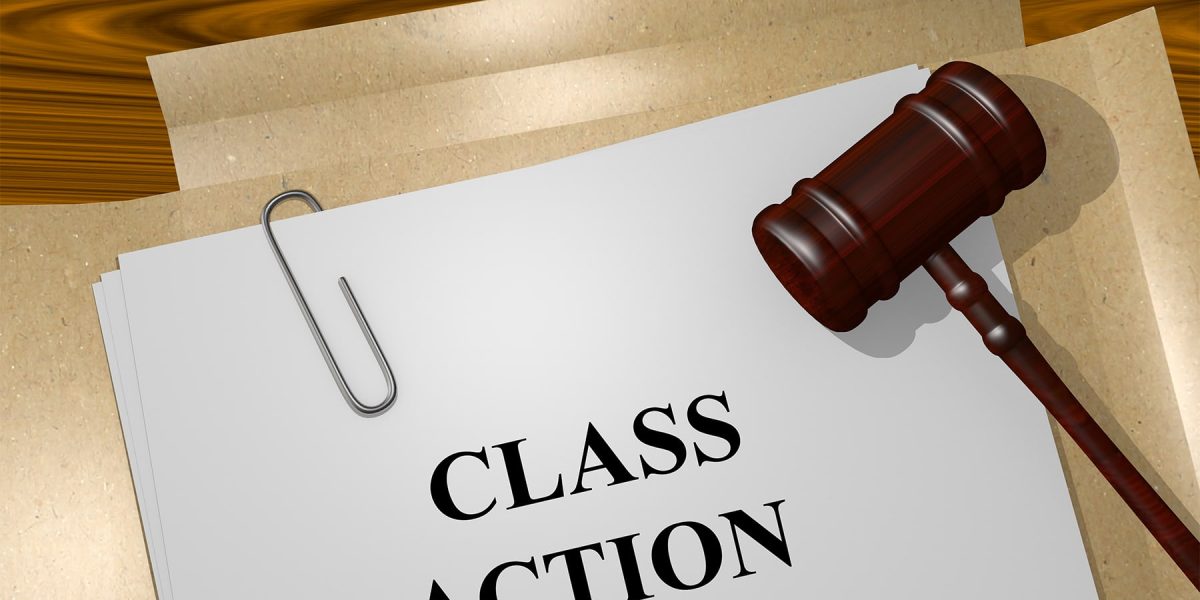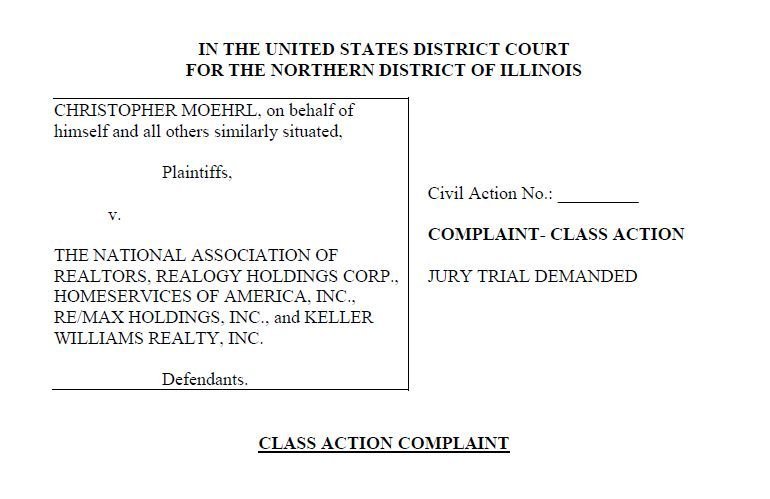Exploring the Assertio Class Action Lawsuit: Your Comprehensive Guide
Exploring the Assertio Class Action Lawsuit: Your Comprehensive Guide
Blog Article
Exploring Course Activity Claims: What You Need to Know
Course action lawsuits have actually become significantly common in today's legal landscape, with people joining pressures to seek remedy against corporations and companies. In this discussion, we will certainly check out the ins and outs of class activity suits, shedding light on their meaning, the requirements for declaring, and the prospective benefits and downsides included.
The Definition of Course Action Claims
Exactly what is the interpretation of a course action legal action? A course action suit is a lawsuit submitted by a group of people that have comparable insurance claims versus a defendant. It allows a large number of individuals, known as the class participants, to sign up with together and pursue their claims jointly, instead of each individual declaring a separate suit. Class activity lawsuits are typically brought when the variety of prospective plaintiffs is too huge for private claims to be functional. They are typically utilized in situations entailing customer defense, item responsibility, securities fraud, and work issues.
One of the vital components of a course activity legal action is that the lead complainant, additionally referred to as the class rep, stands for the rate of interests of all the course participants. The court selects the lead plaintiff based upon their capacity to rather and effectively stand for the class. The lead plaintiff works carefully with the class action attorney to seek and develop a solid instance settlement or other remedies in support of the whole class.
In order for a class activity legal action to proceed, the court needs to accredit the class. This suggests that the court figures out that the lawsuit fulfills specific needs, such as numerosity (a large sufficient number of course participants), commonality (usual questions of law or truth), typicality (the insurance claims of the lead complainant are regular of the class), and competence of representation (the lead complainant and course advice can representing the course's rate of interests) Once the course is accredited, the legal action can move on, and any kind of judgment or settlement got to will relate to all class participants unless they select to opt-out.
Class action lawsuits offer a crucial function in providing accessibility to justice for individuals who may not have the sources to seek their insurance claims independently. They additionally promote performance in the lawful system by consolidating comparable claims into a single action, lowering the concern on both the court and the events entailed.
Demands for Submitting a Class Activity Legal Action

One more demand is that the course must be adequately many. The specific variety of course participants needed might differ relying on the territory and the nature of the instance. Nonetheless, it is generally expected that the class must be big sufficient that signing up with all the specific plaintiffs right into a solitary legal action is much more effective than having several separate claims.
Furthermore, it is vital that the course representative, that is the private or entity bringing the legal action on behalf of the class, has common insurance claims and defenses to those of the class members. The agent has to also have the ability to effectively and fairly represent the interests of the whole class.

Advantages and Drawbacks of Course Activity Suits
Class activity claims use both advantages and disadvantages for complainants and offenders associated with the lawful procedure. On the one hand, among the substantial advantages of class action legal actions is that they give a cost-effective and reliable method for individuals with comparable insurance claims to pursue justice collectively. By settling many similar cases right into one legal action, course actions simplify the legal process and conserve time and resources for both plaintiffs and defendants.
An additional advantage of course activity claims is that they allow individuals with minimal sources to seek compensation for their problems. In cases where the possible recuperation is little, specific lawsuits may not be financially viable. Nevertheless, by signing up with forces in a class activity, complainants can pool their resources and raise their chances of acquiring a reasonable resolution.
Furthermore, course actions can promote social modification by holding corporations answerable for their activities. By accentuating extensive misbehavior or malfunctioning products, course actions can pressure business to alter their techniques, boost product security, or implement reforms.
Nonetheless, course actions likewise have drawbacks. One possible drawback is that specific complainants may have limited control over the lawsuits process and the utmost result of the instance. The lead complainants and their attorneys normally make vital decisions in behalf of the entire course, which might not constantly align with the specific rate of interests of each class member.
Furthermore, class actions can be time-consuming and lengthy, typically taking years to reach a resolution. The complexity and dimension of these lawsuits can cause hold-ups and extended internet litigation, which can be annoying for both offenders and complainants seeking a timely resolution.
Steps Entailed in a Course Action Suit
The process of a course action lawsuit commonly starts with the identification of a potential course and the declaring of a grievance. Once a group of people who share comparable insurance claims against an more tips here accused is determined, the lead plaintiff, or class agent, submits a complaint in behalf of the whole class. This grievance details the supposed misdeed and seeks damages or various other alleviation for all participants of the class.
After the grievance is submitted, the court will certainly establish whether the situation fulfills the demands for course qualification. These needs commonly include numerosity (a big adequate course), commonness (similar lawful claims), typicality (the lead complainant's insurance claims are representative of the course), and competence of depiction (the lead complainant and their attorney can properly stand for the class's rate of interests)
If the court accredits the course, notice is supplied to all possible class members, offering them the chance to opt-out if they wish to pursue their very own private claims - Future FinTech class action lawsuit. If an adequate number of course participants stay, the case will proceed to the exploration phase, where both sides collect proof and information pertinent to the claims
Following discovery, the celebrations might participate in negotiation arrangements or continue to test. If the case goes to trial and the class prevails, the court will identify the proper problems or alleviation to be awarded to the course participants.
Current Spots Course Activity Legal Actions
With a strong understanding of the actions associated with a course activity claim, it is currently crucial to check out some current spots situations that have actually made a significant impact in the lawful landscape. Assertio class action lawsuit. These instances have not just formed the method class activity claims are carried out link however have actually likewise produced changes in different industries
One such spots instance is the Volkswagen exhausts rumor, which led to the largest course action settlement in vehicle history. This deceptiveness influenced millions of customers worldwide, leading to a course action claim.
An additional noteworthy instance is the Johnson & Johnson talcum powder suit. Thousands of females filed claims versus the company, declaring that their talcum powder items caused ovarian cancer.
These current spots cases demonstrate the power of course activity lawsuits in holding companies answerable for their actions and seeking justice for afflicted people. They function as examples of how course activity lawsuits can produce considerable adjustments and safeguard the civil liberties of customers.
Conclusion
Finally, course action claims are a lawful device that allows a group of people to jointly seek justice for a typical complaint. While they offer several benefits such as effectiveness and cost-effectiveness, there are also disadvantages such as prospective for minimal settlement and lengthy legal procedures. Recognizing the steps and demands associated with submitting a class action claim is important for people looking for to pursue this lawful method. Current spots course action suits have actually highlighted the value of such cases in supporting for customer civil liberties and corporate accountability.
One of the essential components of a course action legal action is that the lead complainant, also recognized as the course representative, stands for the rate of interests of all the class participants.In order for a class activity claim to proceed, the court needs to certify the course. This indicates that the court identifies that the lawsuit satisfies certain needs, such as numerosity (a large adequate number of class participants), commonality (usual concerns of law or truth), typicality (the claims of the lead complainant are common of the course), and adequacy of depiction (the lead plaintiff and course counsel are qualified of representing the course's passions) When the course is certified, the claim can move ahead, and any kind of judgment or settlement got to will apply to all class members unless they pick to opt-out.
The process of a course action claim generally starts with the identification of a prospective class and the declaring of a grievance.
Report this page